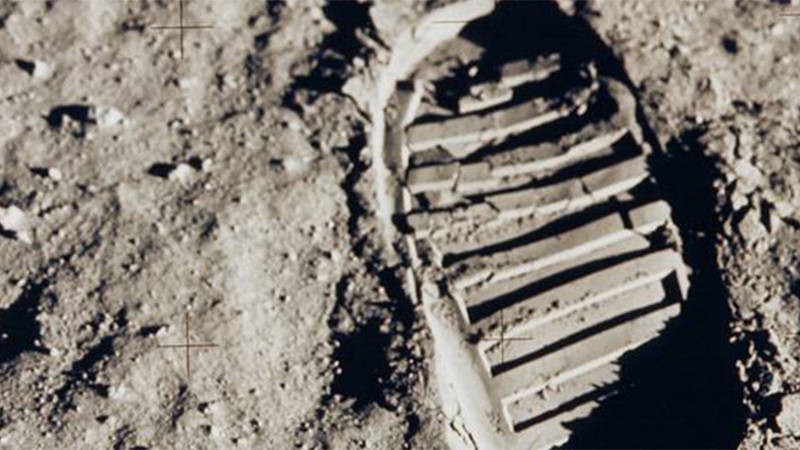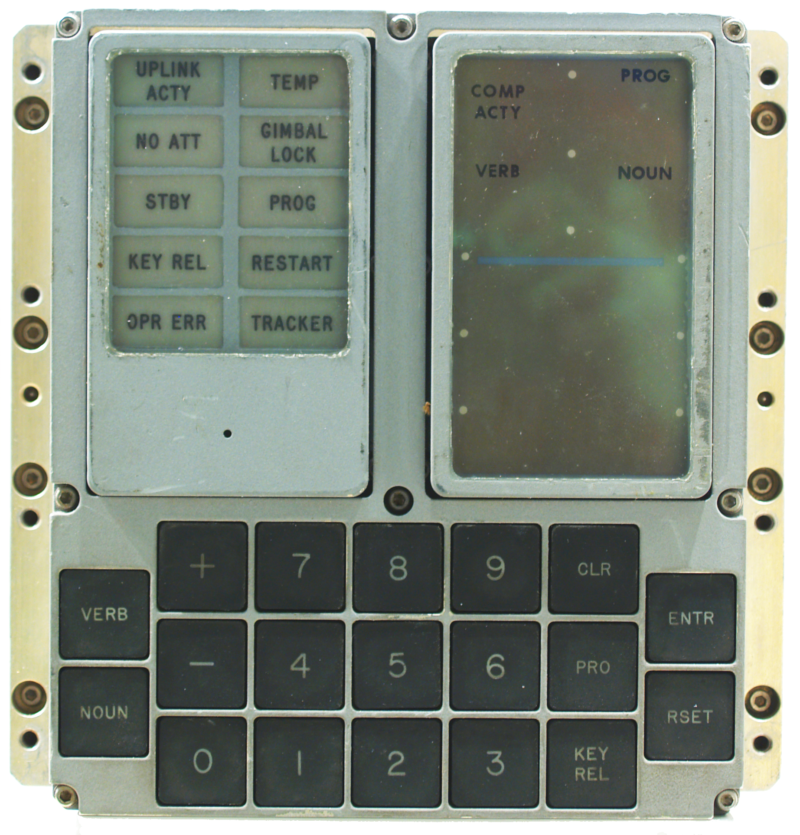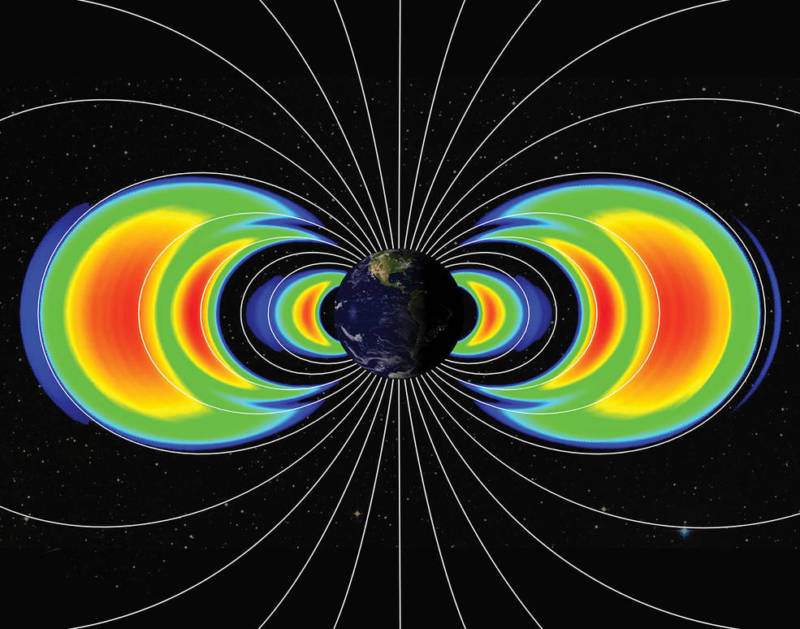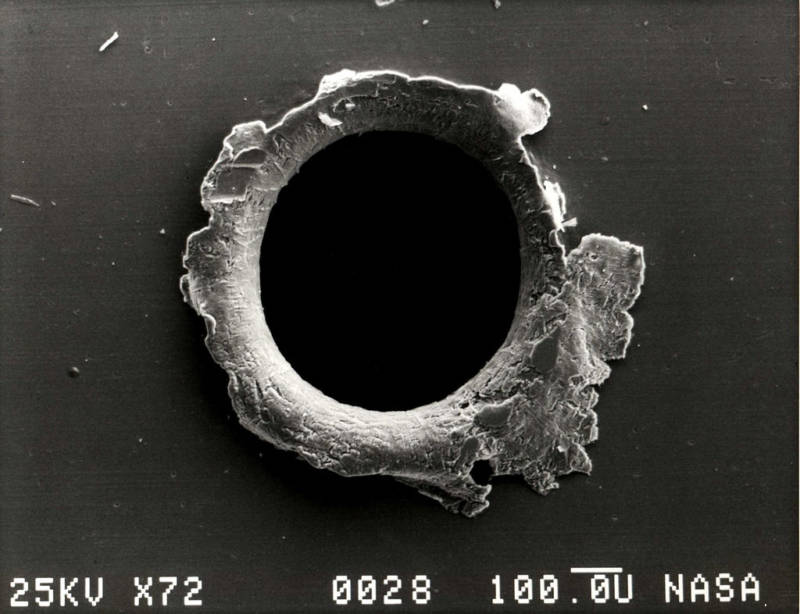Today, the basic physics of getting to the moon and back seem disarmingly simple. Apply the force of rocket thrust to oppose the force of Earth’s gravity, using it to lift off the ground. Apply further rocket thrust to propel your spacecraft toward the moon, then coast the rest of the way. Finally, use rockets to counter the moon’s gravity to control your downward speed and make a soft landing.
But the Apollo missions that made the round-trip voyage between 1969 and 1972 represented an unprecedented challenge for engineers of the day, who managed to deliver 12 astronauts to the surface of the moon and bring them back to Earth employing technology that today seems astonishingly primitive. Looking back at those events from our privileged high-tech perspective can prompt feelings of awe.

Apollo Flights Were Triumphs for Their Time
Consider the details of the primitive technological tools and complicated orbital mathematics that allowed us to navigate those simple laws of nature to get there and back again. If you were alive during the Apollo missions, you remember what things were like. Black-and-white tube televisions took minutes to warm up. Households shared a landline telephone. Even simple pocket calculators were yet to be invented.
Computers were more a creation of science fiction than something most regular folks had ever seen in person. They were barely beginning to evolve toward today’s miniature digital miracles — they employed transistors, electronic resistors, capacitors, and other basic components that were either wired together on circuit boards, or (at best) early versions of printed circuit technology — a far cry from the printed microchip devices we are dependent on today.
In comparison, the smartphone in your pocket crunches numbers a hundred million times faster than the best computers of the Apollo age and can store billions of times more data.

Rocket technology grew up out of post-World War II military applications, as well as the Cold War between the United States and the Soviet Union. Rockets were simple tubes of solid fuel ignited like Roman candles, or single-use tanks of liquid fuel poured into combustion chambers and set alight. Today, the SpaceX Corporation has developed reusable rockets that return to Earth and land softly after lifting their payloads skyward.
Deep Into the Unknown
Having never sent a human farther into space than low Earth orbit, the road to the moon was unpaved by human experience. NASA sent out a few preliminary robotic probes between 1962 and 1968 — the Rangers and Surveyors — to get an idea of what lay ahead for the Apollo astronauts. But many questions and unknown dangers remained.
For starters, the surface of the moon was itself a largely unknown environment. Might there be a dusty lunar version of quicksand in some locations into which an Apollo lander or astronaut might sink, such as envisioned by Arthur C. Clarke in his novel “A Fall of Moondust”? Would the ground be stable and solid or collapse into hidden caverns below?
Though prior robotic landers had set down safely, no one knew how varied the lunar landscape would be at any given Apollo landing site.
Another real concern at the time: space viruses and bacteria. No one was sure whether microscopic lunar critters would hitch a ride on the returning astronauts. So cautious were NASA directors and scientists about potential threats from space and the moon, the crew of the first three landing missions (Apollos 11 through 14) were quarantined in isolation for three weeks after returning to Earth.

Virgin space travel gave NASA plenty of other headaches. For starters, NASA gave serious attention to the swaths of high-energy radiation that surround Earth, the Van Allen Radiation Belts. Discovered by James Van Allen in the 1950s, these zones of potentially dangerous radiation are formed by electrons and protons trapped within Earth’s magnetic field. To minimize the risk to moon-bound astronauts, NASA aimed the Apollo 11 spacecraft to pass through the danger zone as quickly as possible.
Solar radiation also concerned scientists. The dangers of radiation bursts from the sun, including solar flares and coronal mass ejections, were not as well understood in the 1960s as they are today. Once bursts of X-rays and high-energy solar particles venture outside the protection of Earth’s atmosphere and magnetic field, they can inflict damage on astronauts and electronic equipment. Even today, crews aboard the International Space Station are sometimes instructed by Mission Control to take shelter in the portion of the ISS with the thickest radiation shields during powerful solar eruptions.
Fortunately, all three years of the Apollo moon flights took place during a “solar minimum,” a period when the sun is relatively quiet and exhibits few dangerous eruptions.

Finally, astronauts had dangerous space rocks to contend with. Even a pebble-sized rock flying at several miles per second can punch a hole in the thin-walled hull of a spacecraft, causing equipment damage or a leak of precious cabin air.
Preventing a minuscule, super-fast “micrometeoroid” from hitting a spacecraft is practically impossible since there is no way to see it coming, or to move out of its way quickly enough even if you could. So Apollo astronauts were equipped with spacesuits that could save their lives even if cabin air pressure was compromised. If depressurization was not catastrophic, they might have time to don that protection.
Beyond this precaution, NASA relied heavily on the vastness of space and the sparseness of space debris to protect their missions’ intrepid crews. It still does.
Despite enormous advancements in computer, material and propulsion technology, returning to the moon today won’t be done with a snap of the fingers. We still have to contend with the physics of gravity and rocket thrust, the radiation dangers in space, and a lethal physical environment held tenuously at bay by the thin walls of a spacecraft and a few swaddling layers of spacesuit material. But at least we know something about the challenges along the way, thanks to the early experiences of the Apollo astronauts, engineers, and scientists.